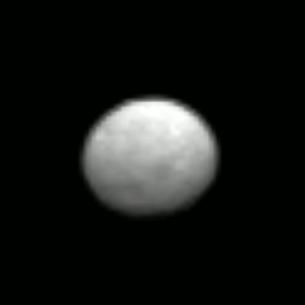PhysOrg, “NASA invests in 22 visionary exploration concepts” 9 April 2017:
NASA’s Jet Propulsion Laboratory in Pasadena, California, is advancing for a new round of research funded by the agency.
In total, the space agency is investing in 22 early-stage technology proposals that have the potential to transform future human and robotic exploration missions, introduce new exploration capabilities, and significantly improve current approaches to building and operating aerospace systems.
The 2017 NASA Innovative Advanced Concepts (NIAC) portfolio of Phase I concepts covers a wide range of innovations selected for their potential to revolutionize future space exploration. Phase I awards are valued at approximately $125,000, for nine months, to support initial definition and analysis of their concepts. If these basic feasibility studies are successful, awardees can apply for Phase II awards.
“The NIAC program engages researchers and innovators in the scientific and engineering communities, including agency civil servants,” said Steve Jurczyk, associate administrator of NASA’s Space Technology Mission Directorate. “The program gives fellows the opportunity and funding to explore visionary aerospace concepts that we appraise and potentially fold into our early stage technology portfolio.”
The selected 2017 Phase I proposals are:
- A Synthetic Biology Architecture to Detoxify and Enrich Mars Soil for Agriculture, Adam Arkin, University of California, Berkeley
- A Breakthrough Propulsion Architecture for Interstellar Precursor Missions, John Brophy, NASA’s Jet Propulsion Laboratory (JPL) in Pasadena, California
- Evacuated Airship for Mars Missions, John-Paul Clarke, Georgia Institute of Technology in Atlanta
- Mach Effects for In Space Propulsion: Interstellar Mission, Heidi Fearn, Space Studies Institute in Mojave, California
- Pluto Hop, Skip, and Jump, Benjamin Goldman, Global Aerospace Corporation in Irwindale, California
- Turbolift, Jason Gruber, Innovative Medical Solutions Group in Tampa, Florida
- Phobos L1 Operational Tether Experiment, Kevin Kempton, NASA’s Langley Research Center in Hampton, Virginia
- Gradient Field Imploding Liner Fusion Propulsion System, Michael LaPointe, NASA’s Marshall Space Flight Center in Huntsville, Alabama
- Massively Expanded NEA Accessibility via Microwave-Sintered Aerobrakes, John Lewis, Deep Space Industries, Inc., in Moffett Field, California
- Dismantling Rubble Pile Asteroids with Area-of-Effect Soft-bots, Jay McMahon, University of Colorado, Boulder
- Continuous Electrode Inertial Electrostatic Confinement Fusion, Raymond Sedwick, University of Maryland, College Park
- Sutter: Breakthrough Telescope Innovation for Asteroid Survey Missions to Start a Gold Rush in Space, Joel Sercel, TransAstra in Lake View Terrace, California
- Direct Multipixel Imaging and Spectroscopy of an Exoplanet with a Solar Gravity Lens Mission, Slava Turyshev, JPL
Solar Surfing, Robert Youngquist, NASA’s Kennedy Space Center in Florida
- A Direct Probe of Dark Energy Interactions with a Solar System Laboratory, Nan Yu, JPL
“The 2017 NIAC Phase I competition has resulted in an excellent set of studies. All of the final candidates were outstanding,” said Jason Derleth, NIAC program executive. “We look forward to seeing how each new study will expand how we explore the universe.”
Phase II studies allow awardees time to refine their designs and explore aspects of implementing the new technology. This year’s Phase II portfolio addresses a range of leading-edge concepts, including: a Venus probe using in-situ power and propulsion to study the Venusian atmosphere, and novel orbital imaging data derived from stellar echo techniques—measurement of the variation in a star’s light caused by reflections off of distant worlds—to detect exoplanets, which are planets outside our solar system.
Awards under Phase II of the NIAC program can be worth as much as $500,000, for two-year studies, and allow proposers to further develop Phase I concepts that successfully demonstrated initial feasibility and benefit.
The selected 2017 Phase II proposals are:
- Venus Interior Probe Using In-situ Power and Propulsion, Ratnakumar Bugga, JPL
- Remote Laser Evaporative Molecular Absorption Spectroscopy Sensor System, Gary Hughes, California Polytechnic State University in San Luis Obispo
- Brane Craft Phase II, Siegfried Janson, The Aerospace Corporation in El Segundo, California
- Stellar Echo Imaging of Exoplanets, Chris Mann, Nanohmics, Inc., Austin, Texas
- Automaton Rover for Extreme Environments, Jonathan Sauder, JPL
- Optical Mining of Asteroids, Moons, and Planets to Enable Sustainable Human Exploration and Space Industrialization, Joel Sercel, TransAstra Corp.
- Fusion-Enabled Pluto Orbiter and Lander, Stephanie Thomas, Princeton Satellite Systems, Inc., Plainsboro, New Jersey
“Phase II studies can accomplish a great deal in their two years with NIAC. It is always wonderful to see how our Fellows plan to excel,” said Derleth. “The 2017 NIAC Phase II studies are exciting, and it is wonderful to be able to welcome these innovators back in to the program. Hopefully, they will all go on to do what NIAC does best—change the possible.”
NASA selected these projects through a peer-review process that evaluated innovativeness and technical viability. All projects are still in the early stages of development, most requiring 10 or more years of concept maturation and technology development before use on a NASA mission.
NIAC partners with forward-thinking scientists, engineers, and citizen inventors from across the nation to help maintain America’s leadership in air and space. NIAC is funded by NASA’s Space Technology Mission Directorate, which is responsible for developing the cross-cutting, pioneering, new technologies and capabilities needed by the agency to achieve its current and future missions.
Explore further: NASA invests in two-dimensional spacecraft, reprogrammable microorganisms
Read more at: https://phys.org/news/2017-04-nasa-invests-visionary-exploration-concepts.html#jCp
 NASA: Dawn JPL spacecraft used an ion engine to approach dwarf planet Ceres
NASA: Dawn JPL spacecraft used an ion engine to approach dwarf planet Ceres
Posted by Cassini eyes Saturn moon for life on Tue, 18 Apr 2017 11:53 | #
Cassini spacecraft determines the possibility for Saturn’s moon, Enceladus, to sustain life.